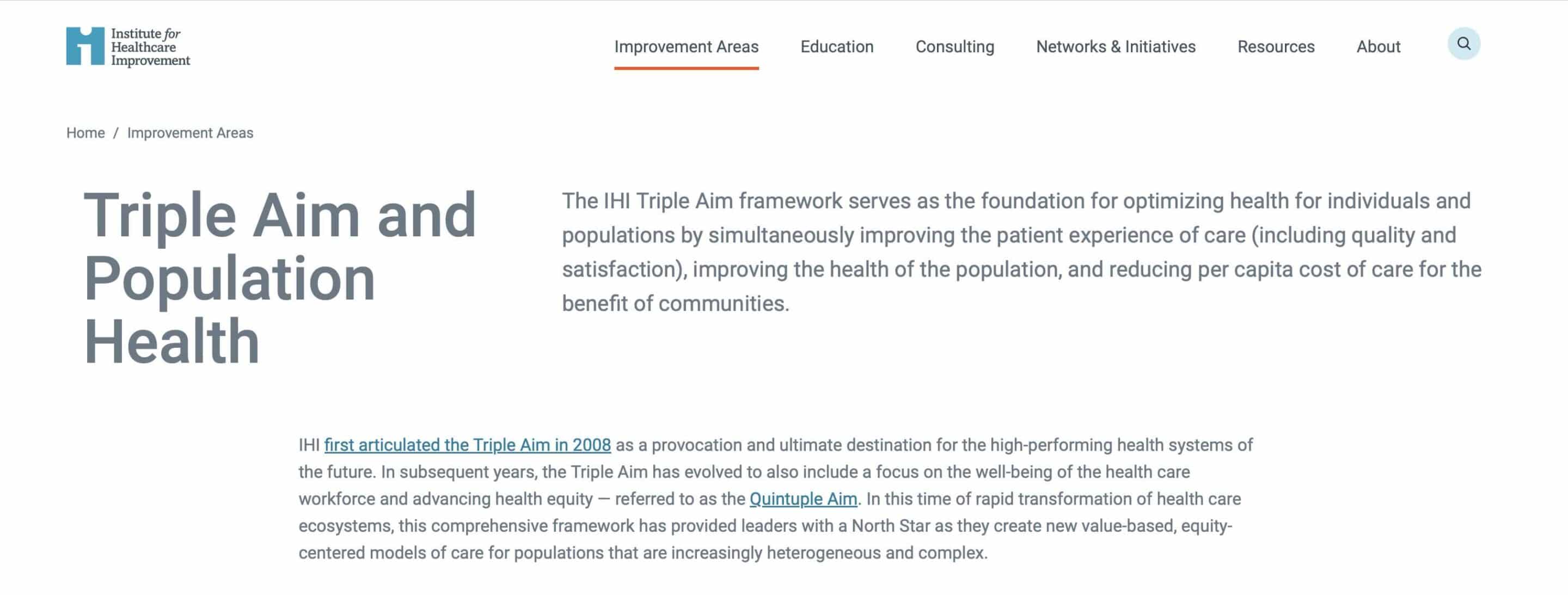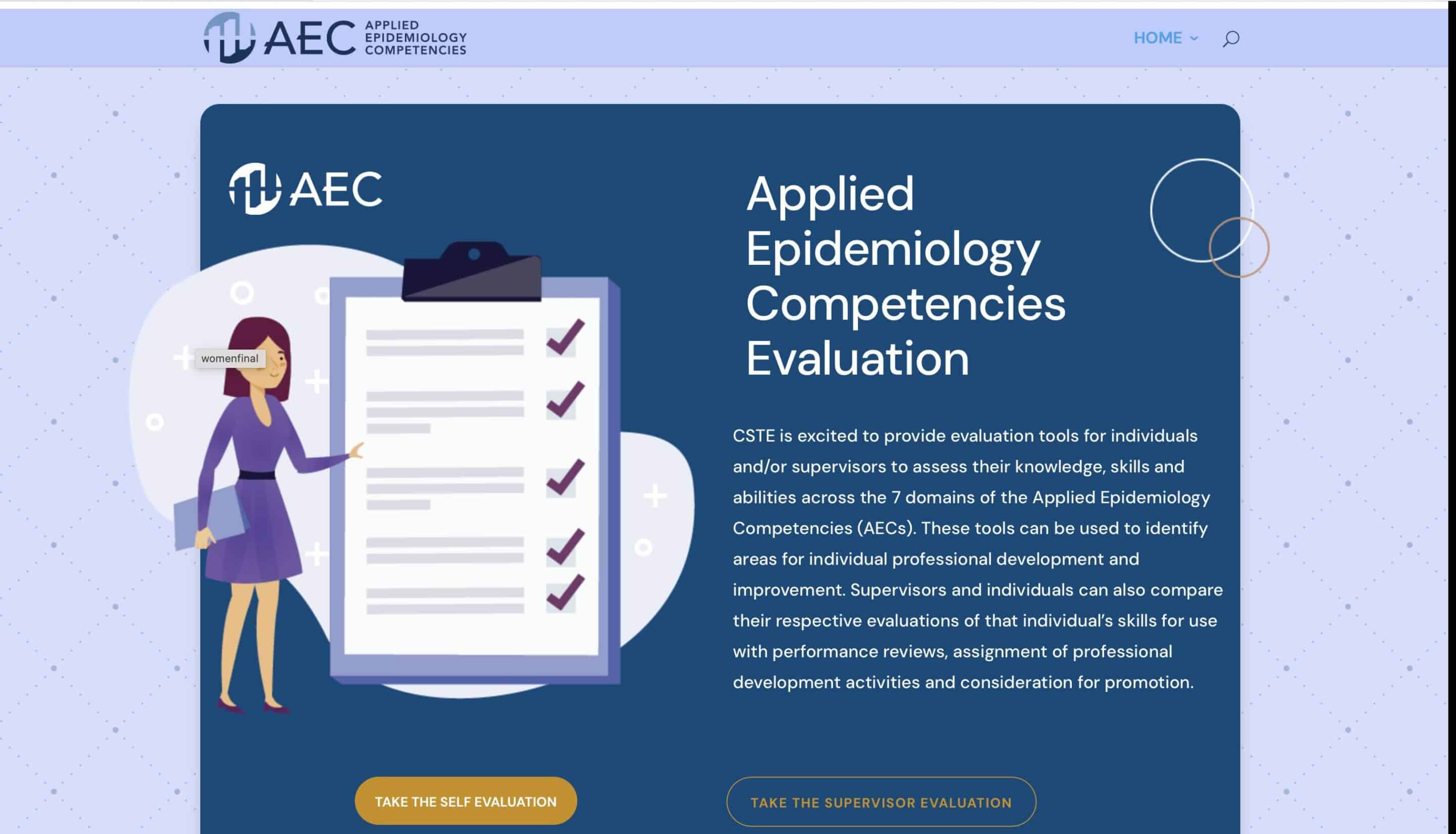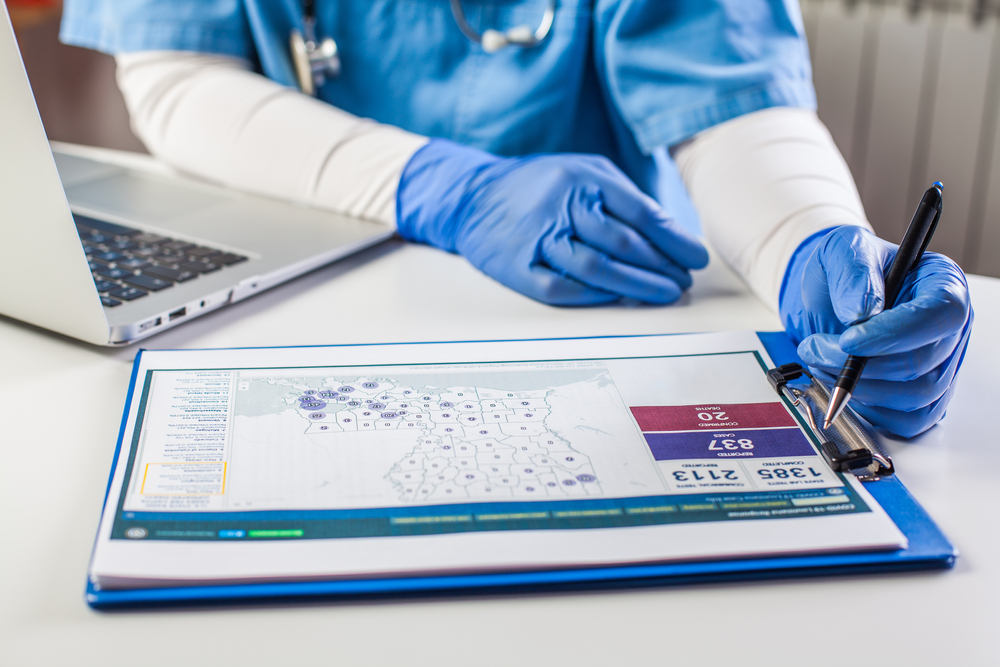
This resource highlights the importance of disease tracking and surveillance in informing public health decisions, especially during COVID-19, while emphasizing...

This resource is a letter from various public health, medical, and advocacy organizations urging President Trump to remain in the World Health Organization (WHO...

This resource is a statement from ‘For Our Health’ condemning actions by the Trump administration that undermine public health protections, including cuts t...

This resource focuses on the IHI Triple Aim framework for optimizing health by improving patient care, health outcomes, and cost-efficiency.

This resource outlines CSTE’s 2024-2026 Strategic Impact Plan, focusing on advancing applied epidemiology to promote public health through innovation, workfor...

This resource provides evaluation tools for assessing knowledge, skills, and abilities across the seven domains of the Applied Epidemiology Competencies (AECs) ...

This article highlights the data deficiencies at every stage of the Covid-19 pandemic, national reporting of racial and ethnic disparities in Covid-19 test...

This Health Advisory provides information about the early, elevated respiratory disease incidence in the 2022-2023 winter season. Diseases caused by multiple vi...

This website summarizes Project REFOCUS, a project that provides a real-time crisis monitoring system and educational resources for public health practitioners....

The second in the CDC Foundation’s Lights, Camera, Action: The Future of Public Health series, this summit brought together more than 1,500 public health ...

This report proposes eight recommendations to strengthen America’s health security and secure U.S. global leadership in the next phase of pandemic respons...

This document describes a multi-year, billion-plus dollar effort to modernize core data and surveillance infrastructure across the federal and state public...

This opinion piece discusses the results of a survey on the effectiveness of wastewater surveillance. It includes recommendations to strengthen and sustain wast...

This report describes decision-making amongst health agency leaders and their informatics staff as they selected and implemented digital resources to support CO...

This brief recommends techniques for case investigators and contact tracers to communicate with contacts effectively.

This lays out the benefits of private-public partnerships in disease response, using growing monkeypox cases as a basis for increased investment.

This story highlights the importance of wastewater surveillance in public health infrastructure, citing its use nationwide during the COVID-19 pandemic and disc...

This article introduces Ending Pandemic’s COVID Near You tracking tool and highlights the importance of large quantities of accurate data.

This interactive dashboard provides daily updates on COVID-19 cases, deaths, hospitalizations, and vaccinations data in the United States.

This webpage provides a set of resources and educational material addressing community equity in regards to the COVID-19 pandemic. The resources address issues ...

This webpage provides information on the addition of COVID-19 data from the US territories to the Health Equity Tracker. The Health Equity Tracker is a database...

The Institute for Healthcare Improvement provides access to a COVID-19 Data Tracker via this webpage. This tool can be used to demonstrate COVID-19 trends, incl...

This webpage provides access to a survey, created and circulated by the CUNY Graduate School of Public Health and Health Policy and Emerson College, assessing N...

This webpage links to various datasets and tools to support regional and national tracking of COVID-19 data. Resources are stratified by field of expertise and ...

This report provides information on the surveillance of COVID-19 and the ethical and legal considerations necessary for its effective implementation. Details ar...

This tool provides access to surveillance information through an animated map with detailed information on COVID-19 case count broken down by geographic region....

This webpage provides access to an interactive map with information on COVID-19 case count and vaccination rate in the US. The data provided is updated regularl...

This webpage provides access to an interactive database of state vaccination resources and locator tools. It also links to additional COVID-19 response resource...

This webpage provides access to an interactive global map of confirmed COVID-19 case count. Additional graphs and data are provided by world region and individu...

This time series dataset includes viral COVID-19 laboratory test [Polymerase chain reaction (PCR)] results from over 1,000 U.S. laboratories and testing locatio...

This resources is a searchable repository of information related to the surveillance of COVID-19. The items within the repository are indexed searchable by keyw...

This guidance document provides information on COVID-19 and its case definition for surveillance purposes. Background information and updated data is provided a...

This resource provides guidance and regulatory information on the surveillance of COVID-19 outbreaks in K-12 schools. It also provides technical guidance on cla...

This webpage provides a deep well of information for public health experts, business preparedness leaders, government officials, and the public on COVID-19.

This webpage includes tools, resources, and best practices for addressing vaccine access barriers. Methods for reaching underserved communities and addressing s...

This webpage strives to ensure that electronic health information is shared appropriately between healthcare and public health partners in the right format, thr...

This webpage details how the CDC calculates percent positivity of laboratory test results of COVID-19.

This webpage provides worksheets, instructions, and a data dictionary on the reporting of information on COVID-19 cases from jurisdictional health departments t...

This webpage provides information on syndromic data critical to COVID-19.

This webpage provides information and resources to help public health departments and laboratories investigate and report COVID-19 cases.

This webpage provides data charts with weekly updated information regarding the cases and hospitalizations of COVID-19 across the United States.

This written story provides information on how state officials identified hotspots to prevent COVID-19 outbreaks.

This mapping tool provides multiple charts with data on the latest updated regarding COVID-19.

This report provides an overview of the methods and strategy used to develop a COVID-19 surveillance system. The document provides public health expertise helpi...

This report identifies states that have defined and are reporting setting-specific COVID-19 outbreaks as of November 2020 and highlights promising examples that...

This webpage provides information pertaining to the use of geospatial tools to monitor the progression of COVID-19. Background information and historical contex...

This journal provides information on COVID-19 and the virus causing the illness, SARS-CoV-2. Historical information is also provided on the development of a cas...

This report from the Partnership for Public Service provides information on emergency preparedness and response in the public services. Recommendations are prov...

This journal article provides an analysis of benefits to be gained from an expanded surveillance of COVID-19 data. A breakdown of projected results is provided.

This resource addresses the need for enhanced surveillance data during the COVID-19 pandemic and the challenges of establishing a unified national surveillance ...

This journal article provides technical information pertaining to the use of electronic health records in public health surveillance. It provides additional con...

This journal article provides a description of the Food and Drug Administration’s sentinel surveillance system and its use in tracking and monitoring the ...

This journal article provides technical information on the use of digital tools for surveillance of COVID-19. Ethical, legal, and sustainability considerations ...

This journal article addresses safety concerns related to the administration of COVID-19 mRNA vaccines. It also discusses surveillance procedure and coordinatio...

This journal article provides background information and advocates for the use of data on COVID-19 to draft appropriate policy serving mitigation efforts. Techn...

This journal article advocates for an increase in the scale of COVID-19 surveillance data collected. It supports developing nationalized standards for disease r...

This written story discusses how the COVID-19 pandemic has affected people of color and how data, like infection, hospitalization, and death rates, show how dis...

This journal article advocates for an increase in scale of COVID-19 surveillance. Data collected and analyzed will help support decision making for community he...

This journal article provides information on a study evaluating how concerns relating to health data privacy affect the surveillance of COVID-19. This study is ...

This journal article examines the components of an ideal surveillance system and assesses the effectiveness of COVID-19 surveillance in North Carolina and aroun...

This article describes gaps in the data on COVID-19 that threaten our public health response, and calls for the rapid adoption of a uniform short digital form f...

This article seeks to identify and understand the causes, contours, and consequences of the surveillance gap and to outline legal and policy tools for addressin...

This journal article addresses the use, promise, perils, and ethics of social media and Internet-based data collection for public health surveillance.

The aim of this paper was to provide a comprehensive overview for the application of data and digital solutions to support surveillance strategies and draw impl...

The purpose of this study was to develop dynamic metrics for public health surveillance that can inform worldwide COVID-19 prevention efforts.

The purpose of this study was to determine the types, challenges and implications of surveillance methods used for controlling COVID-19 pandemic.

The resource discusses the weaknesses in disease surveillance revealed by the COVID-19 pandemic. It mentions issues such as inadequate diagnostic capacity, insu...

This article proposes a new spatio-temporal spline model suited for COVID-19 surveillance that allows estimating and monitoring for small areas, as demonstrated...

This PowerPoint highlights the surveillance strategies used by the CDC for COVID-19 human infection.

This document offers operational guidance for the rapid investigation of suspected COVID-19 cases after an alert or signal. It is a tool to be used by local, re...

This document summarizes current WHO guidance for public health surveillance of coronavirus disease 2019 (COVID-19) in humans caused by infection with severe ac...

This resource is about the coronavirus disease 2019 (COVID-19), caused by the severe acute respiratory syndrome coronavirus 2 (SARS-CoV-2). It explains the symp...

This comparative study discusses the early warning capability, timelines, and validity of alert signals for the first wave of the COVID-19 outbreak in China.

This study examines the value of wastewater surveillance as a tool to trace, prevent, and control the spread of infectious diseases beyond COVID-19.

This report highlights how wastewater surveillance can be an important and effective tool for early detection of SARS-CoV-2 especially among disadvantaged or vu...

This article describes how CDC designed and produced two de-identified datasets for public use from person-level, de-identified data collected by the CDC from j...

This webpage provides a collection of reports, journal articles, and other resources on science and research related to COVID-19.

This webpage provides a collection of maps, graphs, and figures about COVID-19 from leading organizations around the United States.

This webpage provides frequently updated information on COVID-19 data trends in the United States, including a daily-updated video with the latest data. Users c...

This webpage provides regularly updated projections on a number of COVID-19 measures, including reported deaths, excess deaths, vaccine hesitancy, and more.

This webpage presents COVID-19 and related information from the Harvard Chan School of Public Health. It is organized into five main sections: knowledge in acti...

This tool shows the reported deaths from COVID-19 globally and for each state using Shewhart charts.

This article discusses the need for and potential of partnerships between private organizations and governments to develop surveillance systems in order to prev...

This toolkit of tools and resources is intended to support the growing workforce of case investigators and contact tracers. It is organized into two main catego...
This chart is intended to help state, territory, local, and tribal governments with COVID-19 efforts. It provides a short overview of indicators of success and ...

This webpage focuses on healthcare workers and provides guidance and information on how to care for patients, prevent and control COVID-19, safely operate healt...

This webpage provides guidance, strategies, and information on how to protect the health of students teachers, staff, employees, vulnerable groups, and communit...

This free online training is intended to support the rapid training of COVID-19 case investigators and contact tracers.

This webpage provides the latest information about how hospital and health system leaders can work to protect their health care staff as well as information abo...

This webinar features a panel of experts who consider the impact of data collection on addressing the current pandemic and ways to leverage data to prepare for ...

This guide focuses on the role of COVID-19 tests in surveilling and controlling the spread of the COVID-19 pandemic. It provides answers to commonly asked quest...

This report is intended to help policymakers prepare for future public health emergencies based on lessons learned from the COVID-19 pandemic. It provides ten r...

This article describes how tracking the timeliness of disease outbreak detection, verification, notification, and response can provide insight into surveillance...

This article explains how lessons learned from the HIV pandemic can be applied to the COVID-19 pandemic. It highlights the importance of clear, accurate communi...

This article highlights the importance of and need for reliable, high-quality COVID-19 surveillance data. It provides a detailed chart of suggestions on how to ...

This journal article examines houseless shelter characteristics and infection prevention practices in relation to COVID-19 infection prevalence during universal...

This article examines the need for COVID-19 data for sexual and gender minorities. More than a year into the COVID-19 pandemic, only five states have collected ...

This resource hub highlights useful resources from governmental public health, academia, think tanks, and nonprofits to support local health departments in desi...

This webpage provides a compilation of technical guidance for countries on a variety of topics, including: critical preparedness, readiness, and response action...

This tool is intended to help users through the process of creating the safest possible workplace environment for employees and customers. It guides users throu...

This report identifies and analyzes the policy challenges and opportunities in light of the COVID-19 pandemic. It has six main sections, including the role of t...

This resource was created by a team of data scientists, engineers, and designers in partnership with epidemiologists, public health officials, and political lea...































































































